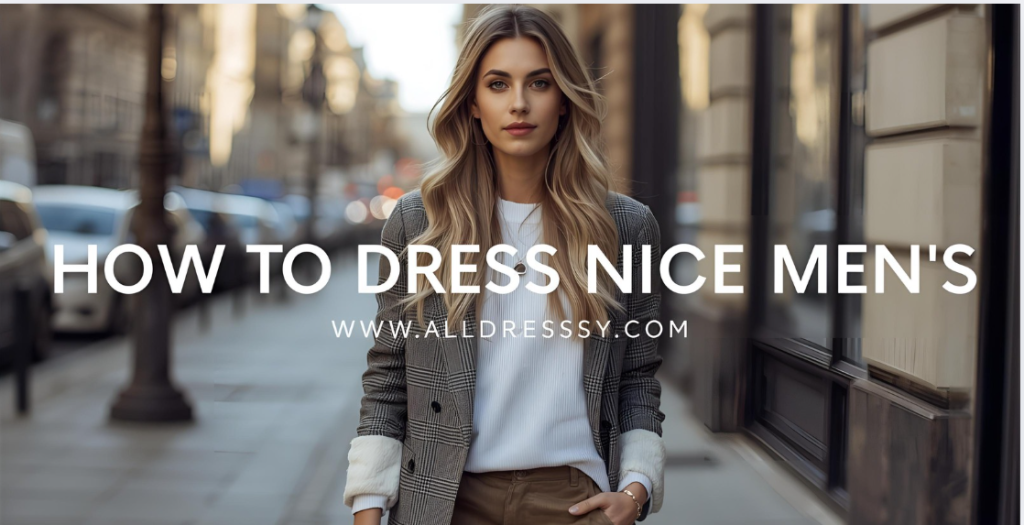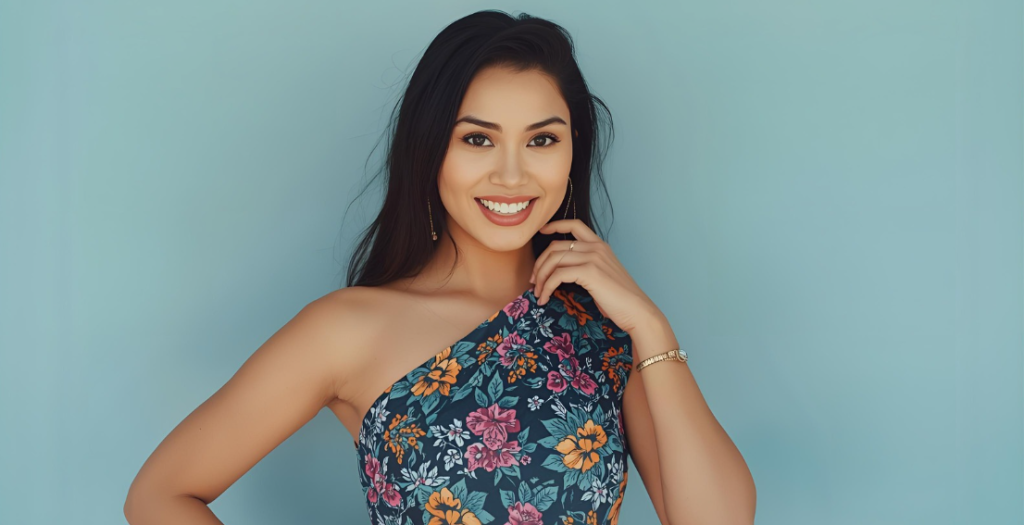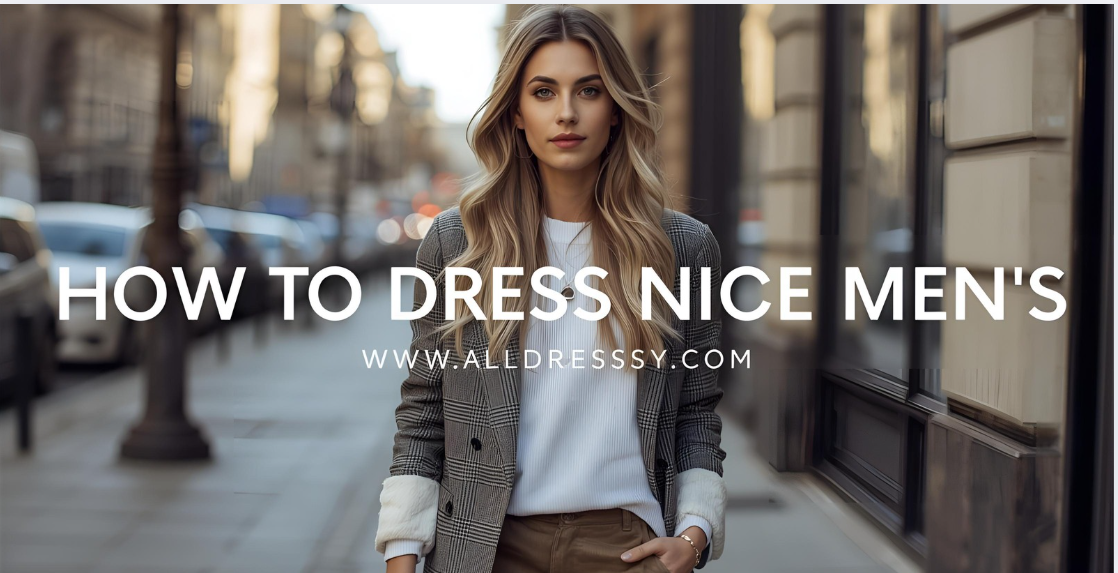The question of how to dress nice men is one that resonates deeply in today’s world. It’s not about chasing every fleeting trend or spending a fortune on designer labels. Instead, it’s about understanding the fundamental principles of style, fit, and self-expression. Dressing well is a form of non-verbal communication; it conveys confidence, competence, and respect—for yourself and for those around you. Many men feel overwhelmed, unsure of where to start, or believe that looking good is a complex art reserved for a select few.
This comprehensive guide is designed to demystify men’s style entirely. We will move beyond basic advice and delve into the core components that transform a wardrobe from a collection of clothes into a toolkit for personal success. Whether you’re dressing for the office, a first date, or a casual weekend, mastering these principles will empower you to always look your best. Learning how to dress nice men is a journey of discovering what works for your unique body, lifestyle, and personality. Let’s begin by tackling the most critical element of all: fit.
The Unbeatable Foundation: Why Fit is King

If you take only one piece of advice from this guide, let it be this: the fit of your clothing is the single most important factor in looking well-dressed. A mediocre garment that fits you perfectly will always look superior to an expensive, high-quality item that fits poorly.
Understanding Proportions and Silhouette
The goal of a good fit is to create a clean, streamlined silhouette that complements your body shape without being too tight or too baggy.
- Shoulders: On jackets, blazers, and coats, the seam where the sleeve meets the body should sit directly on the bone at the edge of your shoulder. It should not be hanging down your arm or pinching into your neck.
- Chest: You should be able to button a blazer or jacket without it pulling tightly across the chest, creating an “X” shape with the fabric. There should be a slight drape, but not so much that it looks boxy.
- Sleeves: The sleeve of a shirt should end at the base of your thumb, where your wrist meets your hand. For suit jackets and blazers, a quarter to a half-inch of your shirt cuff should be visible.
- Trousers: The break—where the bottom of your trousers meets your shoes—is crucial. A modern, clean look is a slight break or no break, meaning the trouser leg just touches the top of your shoe without bunching up. Avoid the stacked, puddled fabric of excessively long trousers.
- Waist: Trousers should sit at your natural waist, not your hips. They should be comfortable without a belt, using the belt for style rather than necessity.
Actionable Tip: Find a good tailor. They are your secret weapon. Simple alterations like hemming trousers, taking in the sides of a shirt, or shortening sleeves are inexpensive and will elevate your entire wardrobe instantly.
Building Your Style Arsenal: The Essential Wardrobe Pieces

Knowing how to dress nice men starts with building a core wardrobe of versatile, high-quality pieces. These are the building blocks that can be mixed, matched, and accessorized for countless outfits.
1. The Crisp White Shirt
A well-fitting white dress shirt is the cornerstone of formal and smart-casual wear. It can be worn under a suit, with chinos, or even with dark jeans for a polished look. Opt for a classic, versatile collar style.
2. The Versatile Oxford Cloth Button-Down Shirt
Slightly more casual than a formal dress shirt, the OCBD is a workhorse. It’s made from a more textured, durable cotton and can be dressed up or down with ease. Navy, light blue, and white are essential colours.
3. The Perfect T-Shirt
For casual wear, a high-quality t-shirt is non-negotiable. Look for ones made from sturdy, medium-weight cotton (not tissue-thin). They should fit snugly through the chest and arms without being skin-tight and end around the mid-fly of your trousers. Stick to neutral colours like white, heather grey, black, and navy.
4. The Dark Wash Selvedge Denim
A pair of well-fitting dark wash jeans without rips or excessive fading is incredibly versatile. They can be paired with a t-shirt and sneakers or dressed up with a blazer and loafers. The fit should be slim or straight-leg.
5. The Classic Chino
Chinos are the bridge between jeans and formal trousers. In colours like khaki, navy, and olive, they can be worn with virtually anything. A slim, tapered fit is the most modern and flattering.
6. The Navy Blazer
A navy blazer is arguably the most versatile item in a man’s wardrobe. It can elevate a pair of chinos, be worn with grey trousers, or even with dark jeans. It’s appropriate for business casual, dates, and semi-formal events.
7. The Mid-Grey Suit
Every man needs at least one great suit. A mid-grey, two-button, single-breasted suit is the most versatile choice. It’s perfect for interviews, weddings, formal dinners, and can be broken up—the jacket worn with jeans and the trousers with a sweater.
8. Quality Footwear: The Big Three
- Brown Leather Derby or Oxford Shoes: A smart brown shoe is essential for formal and business-casual settings.
- Minimalist White Sneakers: A clean, classic white leather sneaker is the ultimate casual footwear that works with everything from shorts to chinos.
- Loafers: A pair of suede or leather loafers is perfect for smart-casual occasions, offering a sophisticated yet relaxed vibe.
The Art of Coordination: Mastering Colour and Pattern
Understanding how to combine colours and patterns is what separates a well-dressed man from someone who is just wearing clothes.
Building a Cohesive Colour Palette
Start with a foundation of neutrals. These are the colours that form the base of your wardrobe and can be mixed and matched effortlessly:
- Core Neutrals: Navy, Grey, White, Khaki, Olive, Black.
- Earth Tones: Burgundy, Brown, Mustard, Forest Green.
A simple rule for how to dress nice men is to build outfits around one or two neutrals and then add a single “accent” colour for visual interest. For example, a navy blazer (neutral) with khaki chinos (neutral) and a burgundy sweater (accent).
Introducing Pattern with Confidence
Patterns add personality and depth to your outfits. The key to combining them is scale and contrast.
- Start Small: If you’re new to patterns, begin with small-scale, subtle patterns like micro-checks or pin stripes.
- The Rule of One: A safe and effective approach is to wear one patterned item per outfit. Pair a patterned shirt with solid trousers, or a solid shirt with patterned trousers.
- Mixing Patterns: For the more advanced, you can mix patterns. The key is to ensure they are of different scales. For example, a thin-striped shirt can be worn with a jacket featuring a larger windowpane check. Keep the colour palette cohesive to tie the look together.
Dressing for the Occasion: A Practical Guide
A crucial part of knowing how to dress nice men is understanding context. What you wear to a backyard barbecue is not what you wear to a board meeting.
Mastering Business Casual
This is often the most confusing dress code. The goal is to look professional and put-together without being in a full suit.
- The Formula: A solid or subtly patterned button-down shirt + tailored trousers (chinos or dress trousers) + smart leather shoes (derbies, loafers, monk straps).
- Layering: Add a sweater (v-neck or crewneck) or a smart jacket (blazer, unstructured sport coat) to instantly elevate the look.
- What to Avoid: Polo shirts (unless your office is very casual), wrinkled clothing, sneakers, and jeans (unless explicitly permitted).
Excelling in Smart Casual
Smart casual is more relaxed but still intentional and polished. It’s the sweet spot for dates, dinners, and social gatherings.
- The Formula: A high-quality t-shirt or polo shirt + dark wash jeans or chinos + clean sneakers or loafers.
- Layering: A denim jacket, bomber jacket, or cardigan can add a great layer of style.
- Focus on Quality: Since the pieces are simpler, their quality and fit become even more important.
Nailing Formal and Black-Tie Events
Always adhere to the specified dress code. When in doubt, it’s better to be slightly overdressed than underdressed.
- Black-Tie: Means a tuxedo. This is non-negotiable. Invest in a well-fitting classic black tuxedo, a white dress shirt, and a black bow tie.
- Formal / Black-Tie Optional: You can wear a tuxedo or a dark, formal suit (navy or charcoal) with a white shirt and a conservative tie.
The Finishing Touches: Grooming and Accessories
The details are what complete a look and show that you’ve put thought into your appearance.
The Non-Negotiable: Personal Grooming
No outfit can compensate for poor grooming.
- Hair: Keep your hair neat and styled in a way that suits your face shape.
- Skin: A basic skincare routine (cleanser, moisturizer, sunscreen) will improve your skin’s health and appearance.
- Fragrance: Wear a subtle, quality fragrance. It should be discovered, not announced.
Curating Your Accessories
Accessories should complement an outfit, not overpower it.
- The Watch: A watch is the most important accessory for a man. Start with a versatile, classic timepiece with a leather or metal strap that can transition from day to night.
- Belts and Shoes: Your belt should generally match your shoes in terms of colour and formality (e.g., brown belt with brown shoes).
- Socks: In formal settings, socks should match your trousers. In casual settings, you have more freedom, but avoid loud novelty socks unless that is your specific style.
- Bags: A stylish leather messenger bag or backpack is both functional and aesthetic.
Developing Your Personal Style Journey
The ultimate goal of learning how to dress nice men is not to look like everyone else, but to develop a style that feels authentically you.
- Find Inspiration: Use platforms like Pinterest or Instagram to save looks you admire. Don’t copy them exactly, but analyze what you like about them—is it the colour combination, the fit, the texture?
- Experiment Slowly: Step out of your comfort zone one piece at a time. Try a new colour of trouser or a different jacket style.
- Focus on Quality Over Quantity: It is better to have a small wardrobe of well-fitting, high-quality pieces you love than a closet full of mediocre, ill-fitting clothes. Adopt a “buy less, but buy better” philosophy.
- Embrace Confidence: The final and most important accessory is confidence. Wear your clothes with pride and self-assurance. When you feel you look good, you project an undeniable energy that is the true essence of style.
FAQs: How to Dress Nice Men
How can I start dressing better on a tight budget?
Focus on fit above all else. You can find great items at thrift stores or discount retailers, but the key is to budget for alterations. A $30 shirt tailored to fit your body will look better than a $300 shirt that doesn’t. Prioritize building your core wardrobe slowly, investing in one quality essential at a time.
What are the most common fit mistakes men make?
The most common mistakes are shirts that are too big in the body and sleeves, trousers that are too long and bunch up at the shoes, and shoulders on jackets that are too wide. Addressing these three areas alone will dramatically improve your appearance.
How many pairs of shoes does a man really need?
You can build a incredibly versatile wardrobe with just 4-5 pairs: a brown leather shoe (for formal/smart-casual), a black leather shoe (for very formal/business), a minimalist white sneaker (for casual), a loafer (for smart-casual), and a functional boot (for winter/casual).
Is it okay to follow trends?
It’s fine to incorporate trends you genuinely like, but do so sparingly with accessories or one statement piece. Build the foundation of your wardrobe on timeless, classic items that will never go out of style. This ensures you always have something to wear, regardless of what is “in fashion.”
How do I know what colours suit me?
A simple method is to determine if you have “warm” or “cool” undertones. Look at the veins on your wrist under natural light. If they appear greenish, you likely have warm undertones and look good in earth tones (browns, olives, tans). If they appear bluish, you have cool undertones and are flattered by jewel tones (navy, grey, burgundy) and stark white. The best test, however, is to try things on and see what makes your complexion look bright and healthy.
Conclusion
Mastering how to dress nice men is an accessible and rewarding pursuit. It is built not on a foundation of limitless spending, but on a clear understanding of fit, a curated collection of essential wardrobe pieces, and a thoughtful approach to colour and occasion. By internalizing the principles outlined in this guide—prioritizing impeccable fit, investing in versatile staples, and paying attention to the finishing touches—you will develop not just a better wardrobe, but a stronger sense of self. Style is a lifelong journey of refinement and self-expression. Start with the basics, build with intention, and, most importantly, wear your clothes with the confidence that comes from knowing you look your very best.

